Alexander H. Nitz
Max-Planck-Institut für Gravitationsphysik, Leibniz Universität Hannover
MLGWSC-1: The first Machine Learning Gravitational-Wave Search Mock Data Challenge
Sep 22, 2022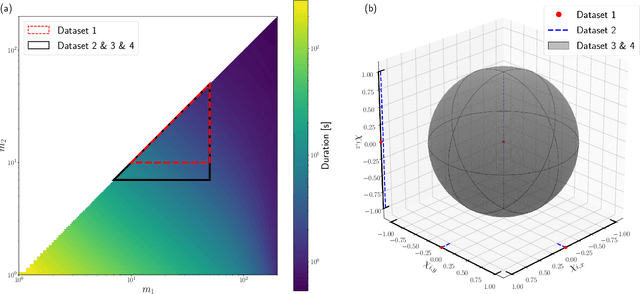
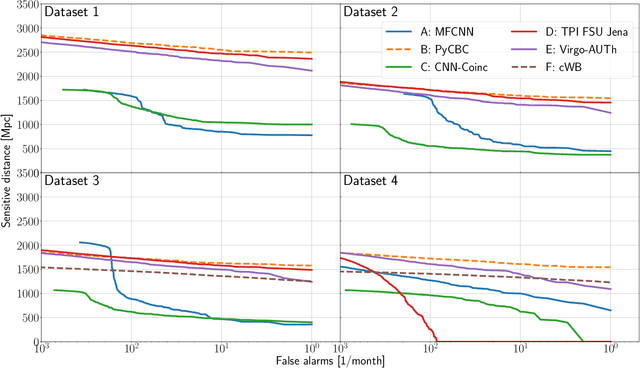
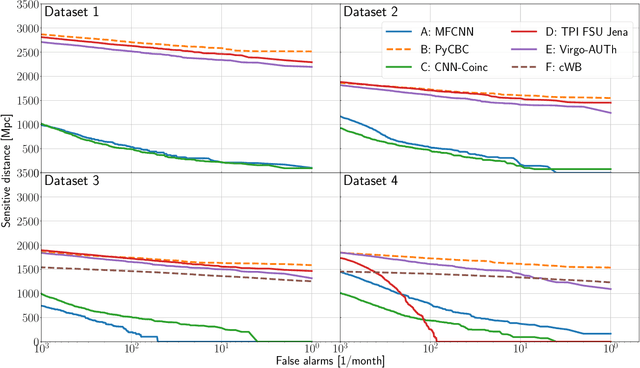
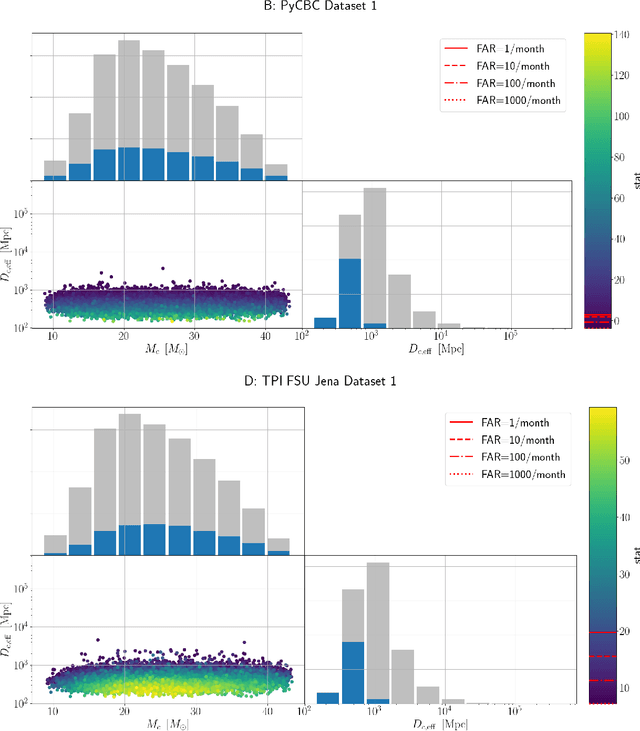
Abstract:We present the results of the first Machine Learning Gravitational-Wave Search Mock Data Challenge (MLGWSC-1). For this challenge, participating groups had to identify gravitational-wave signals from binary black hole mergers of increasing complexity and duration embedded in progressively more realistic noise. The final of the 4 provided datasets contained real noise from the O3a observing run and signals up to a duration of 20 seconds with the inclusion of precession effects and higher order modes. We present the average sensitivity distance and runtime for the 6 entered algorithms derived from 1 month of test data unknown to the participants prior to submission. Of these, 4 are machine learning algorithms. We find that the best machine learning based algorithms are able to achieve up to 95% of the sensitive distance of matched-filtering based production analyses for simulated Gaussian noise at a false-alarm rate (FAR) of one per month. In contrast, for real noise, the leading machine learning search achieved 70%. For higher FARs the differences in sensitive distance shrink to the point where select machine learning submissions outperform traditional search algorithms at FARs $\geq 200$ per month on some datasets. Our results show that current machine learning search algorithms may already be sensitive enough in limited parameter regions to be useful for some production settings. To improve the state-of-the-art, machine learning algorithms need to reduce the false-alarm rates at which they are capable of detecting signals and extend their validity to regions of parameter space where modeled searches are computationally expensive to run. Based on our findings we compile a list of research areas that we believe are the most important to elevate machine learning searches to an invaluable tool in gravitational-wave signal detection.
From One to Many: A Deep Learning Coincident Gravitational-Wave Search
Aug 24, 2021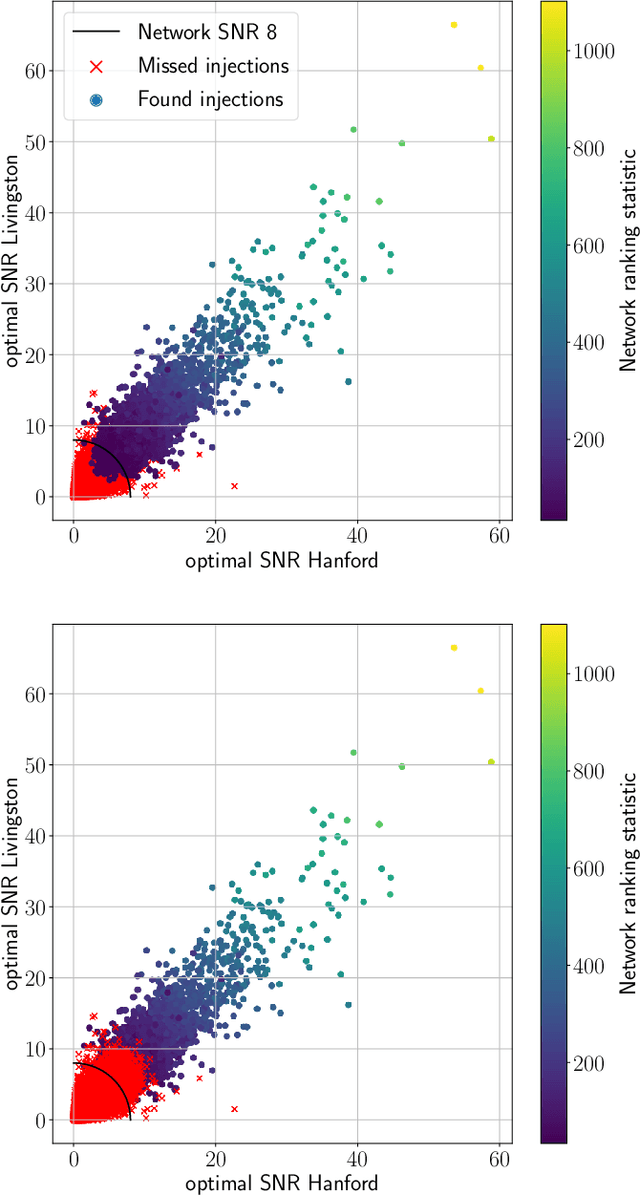
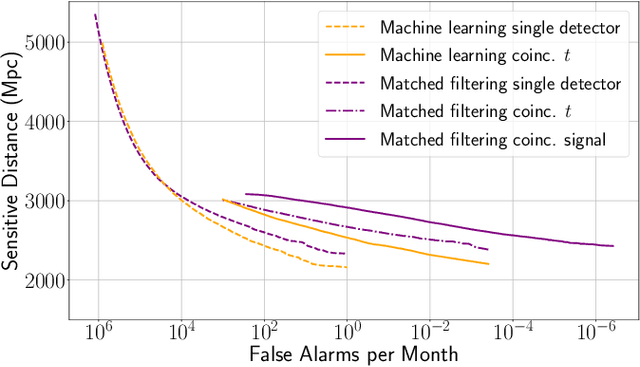
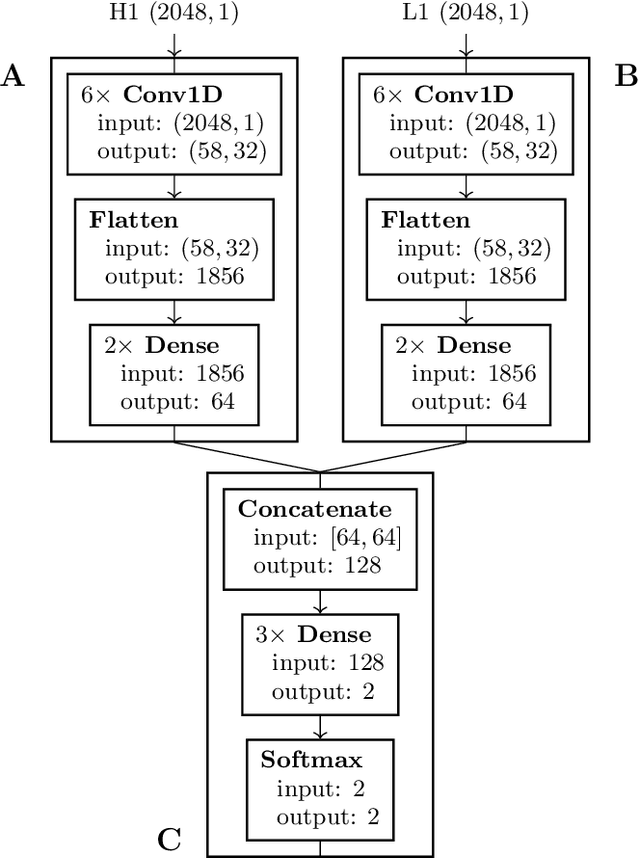
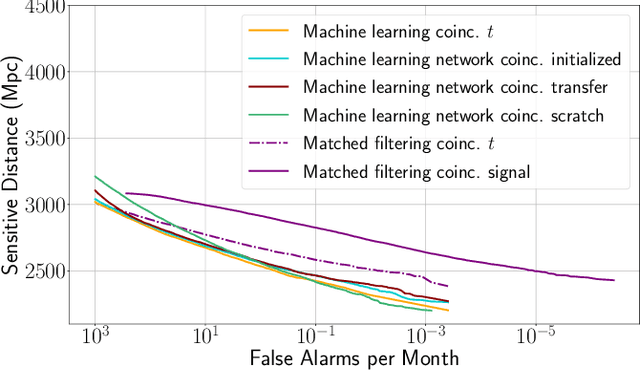
Abstract:Gravitational waves from the coalescence of compact-binary sources are now routinely observed by Earth bound detectors. The most sensitive search algorithms convolve many different pre-calculated gravitational waveforms with the detector data and look for coincident matches between different detectors. Machine learning is being explored as an alternative approach to building a search algorithm that has the prospect to reduce computational costs and target more complex signals. In this work we construct a two-detector search for gravitational waves from binary black hole mergers using neural networks trained on non-spinning binary black hole data from a single detector. The network is applied to the data from both observatories independently and we check for events coincident in time between the two. This enables the efficient analysis of large quantities of background data by time-shifting the independent detector data. We find that while for a single detector the network retains $91.5\%$ of the sensitivity matched filtering can achieve, this number drops to $83.9\%$ for two observatories. To enable the network to check for signal consistency in the detectors, we then construct a set of simple networks that operate directly on data from both detectors. We find that none of these simple two-detector networks are capable of improving the sensitivity over applying networks individually to the data from the detectors and searching for time coincidences.
Training Strategies for Deep Learning Gravitational-Wave Searches
Jun 07, 2021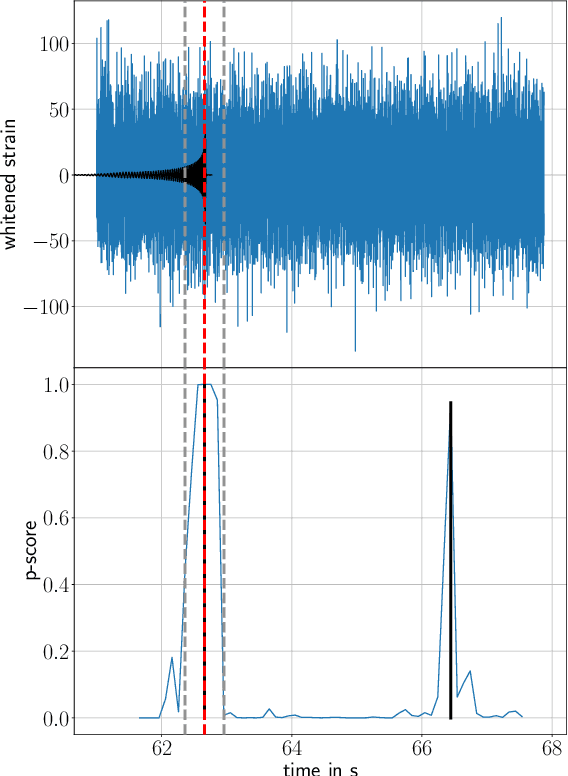
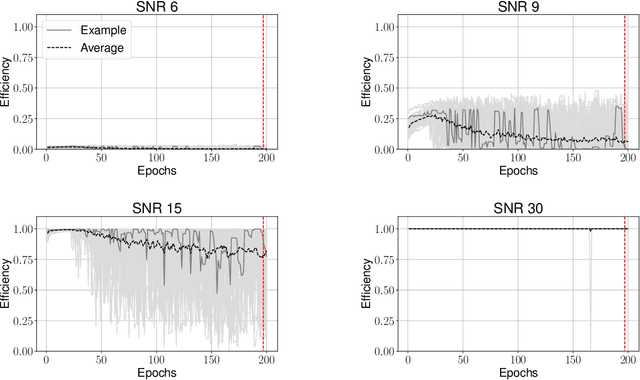
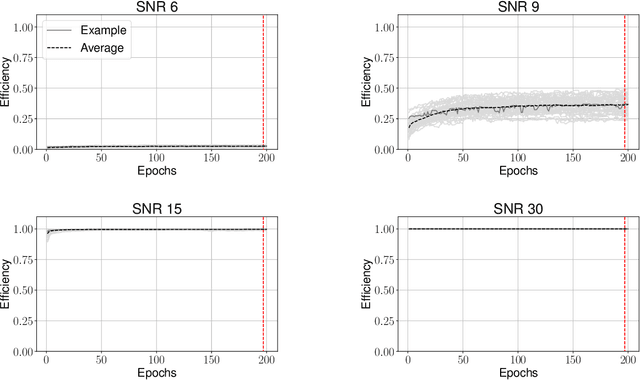
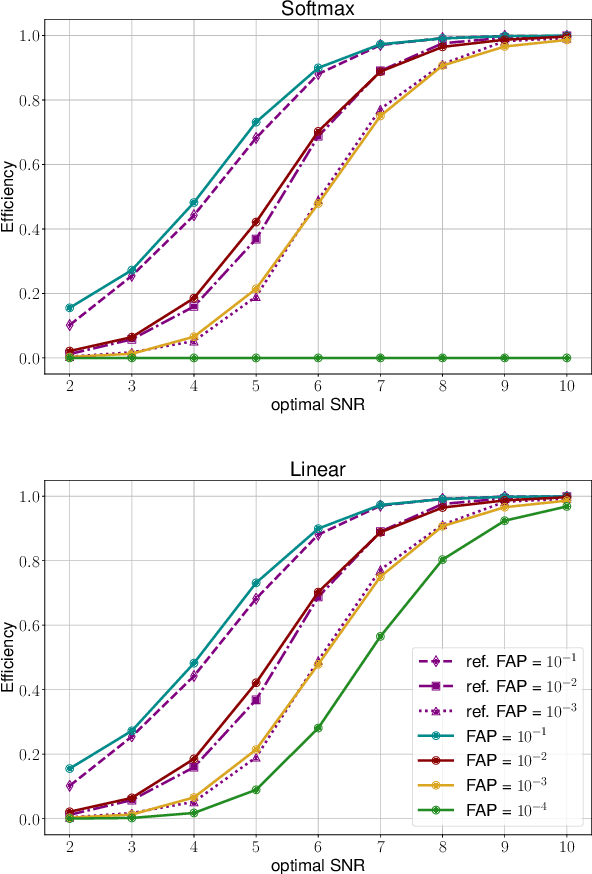
Abstract:Compact binary systems emit gravitational radiation which is potentially detectable by current Earth bound detectors. Extracting these signals from the instruments' background noise is a complex problem and the computational cost of most current searches depends on the complexity of the source model. Deep learning may be capable of finding signals where current algorithms hit computational limits. Here we restrict our analysis to signals from non-spinning binary black holes and systematically test different strategies by which training data is presented to the networks. To assess the impact of the training strategies, we re-analyze the first published networks and directly compare them to an equivalent matched-filter search. We find that the deep learning algorithms can generalize low signal-to-noise ratio (SNR) signals to high SNR ones but not vice versa. As such, it is not beneficial to provide high SNR signals during training, and fastest convergence is achieved when low SNR samples are provided early on. During testing we found that the networks are sometimes unable to recover any signals when a false alarm probability $<10^{-3}$ is required. We resolve this restriction by applying a modification we call unbounded Softmax replacement (USR) after training. With this alteration we find that the machine learning search retains $\geq 97.5\%$ of the sensitivity of the matched-filter search down to a false-alarm rate of 1 per month.
Detection of gravitational-wave signals from binary neutron star mergers using machine learning
Jun 02, 2020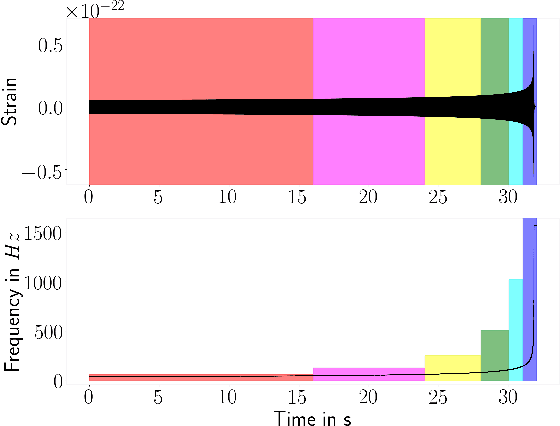
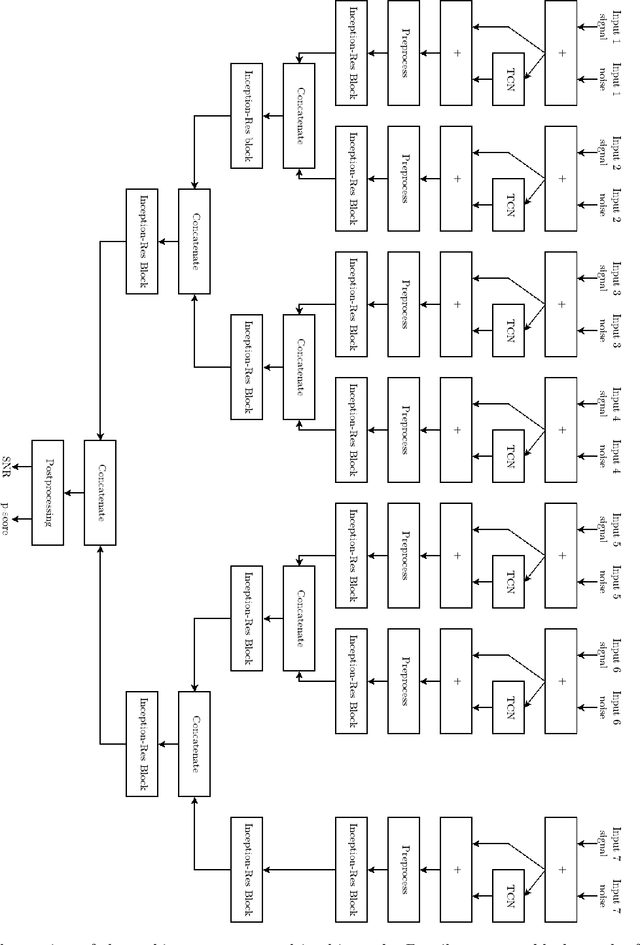
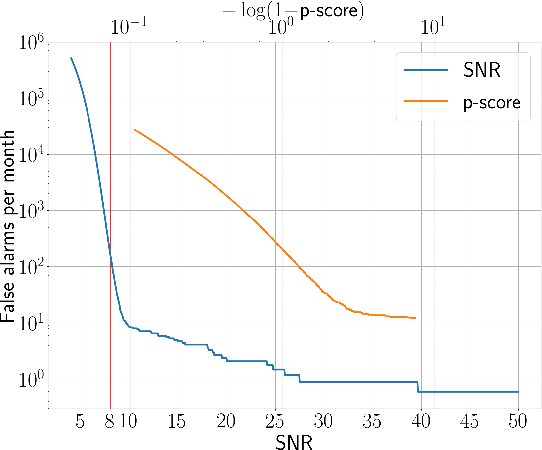
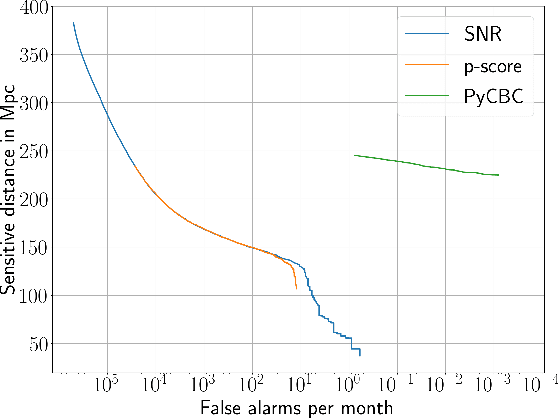
Abstract:As two neutron stars merge, they emit gravitational waves that can potentially be detected by earth bound detectors. Matched-filtering based algorithms have traditionally been used to extract quiet signals embedded in noise. We introduce a novel neural-network based machine learning algorithm that uses time series strain data from gravitational-wave detectors to detect signals from non-spinning binary neutron star mergers. For the Advanced LIGO design sensitivity, our network has an average sensitive distance of 130 Mpc at a false-alarm rate of 10 per month. Compared to other state-of-the-art machine learning algorithms, we find an improvement by a factor of 6 in sensitivity to signals with signal-to-noise ratio below 25. However, this approach is not yet competitive with traditional matched-filtering based methods. A conservative estimate indicates that our algorithm introduces on average 10.2 s of latency between signal arrival and generating an alert. We give an exact description of our testing procedure, which can not only be applied to machine learning based algorithms but all other search algorithms as well. We thereby improve the ability to compare machine learning and classical searches.
 Add to Chrome
Add to Chrome Add to Firefox
Add to Firefox Add to Edge
Add to Edge